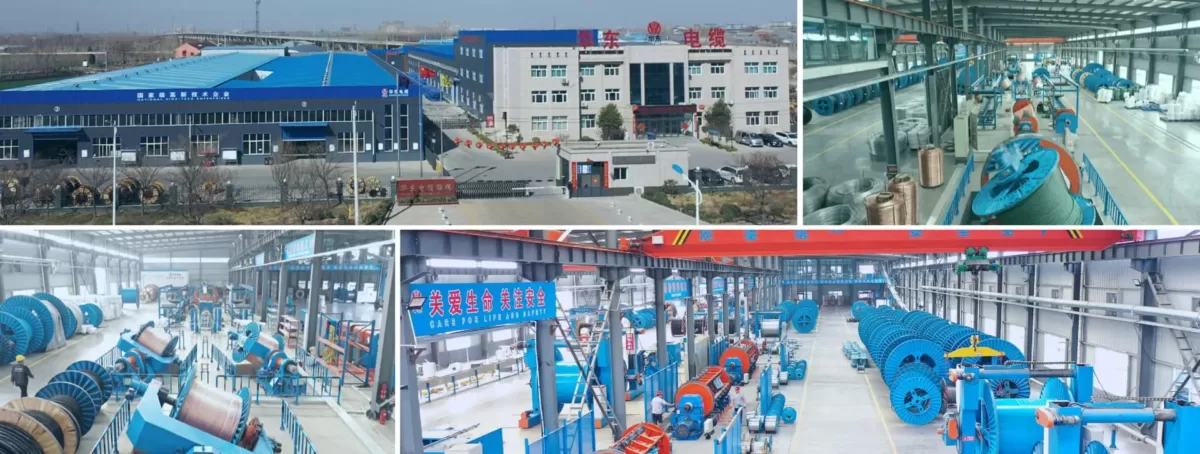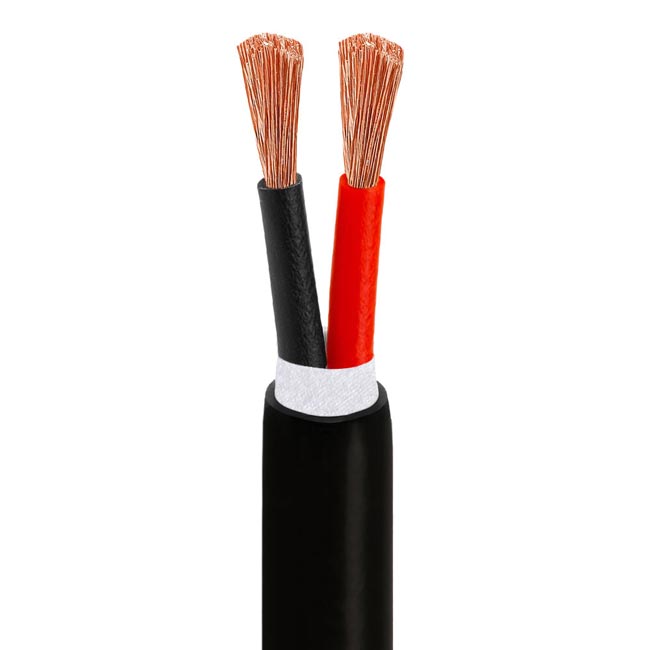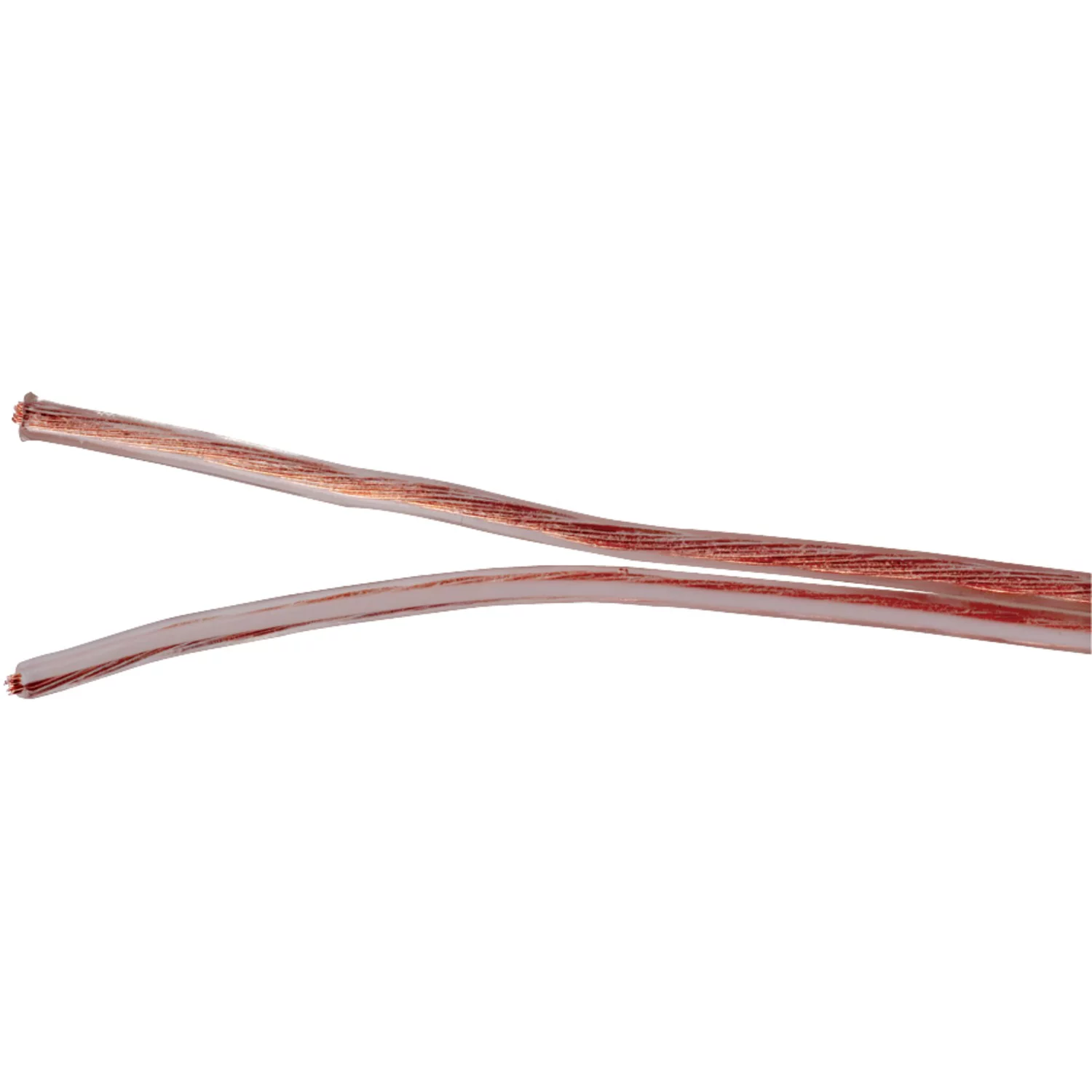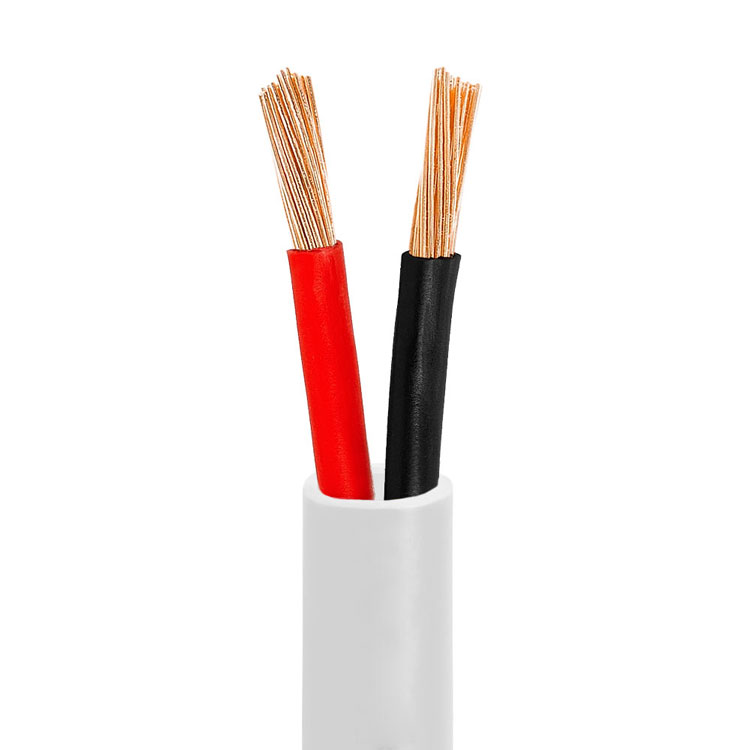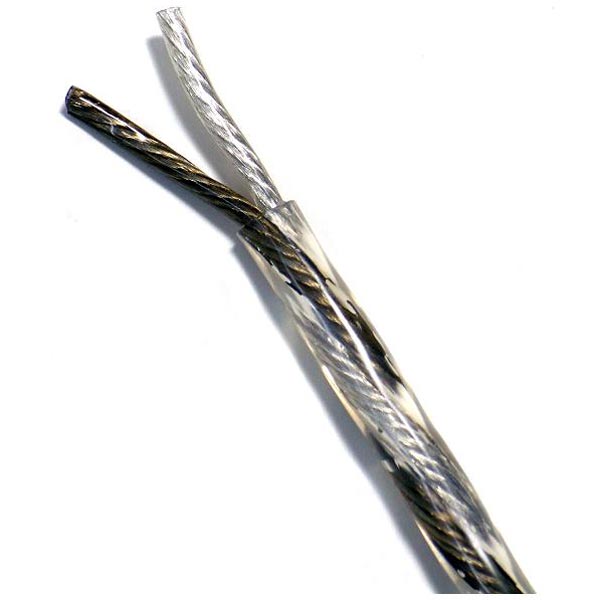what is outdoor speaker wire
Outdoor speaker wire means it can be buried directly into the ground due to the shielding the cabling comes equipped with. It is resistant to pressure, heat, and moisture ensuring your outdoor wire maintains its condition regardless of the weather conditions.
This also makes it easier to install the cabling because it can be buried directly as is instead of having to be pulled through an appropriate conduit. Depending on the location of your cabling, you may still want to run it through a PVC conduit to protect it from gardeners, lawn mowers, and any other potentially hazardous activities.
High-quality direct burial outdoor speaker cable will be insulated in a tough PVC outer shell with each conductor inside the outer shell painted red or black to display polarity. It may also have markers at 2-foot intervals, so you know the exact distance the cabling is run. The jacket will also be UV protected making it resistant to both water and severe weather events. Truly High-quality direct burial cabling requires installation only once, then you can forget about it forever.
Wire Gauge For Outdoor Speaker Wire
Wire gauge is the thickness of the wire measured based on the American Wire Gauge (AWG) standard. The larger the AWG number, the thinner the wire is. Thicker wire transmits electricity at a faster rate than a thinner wire does. The rule of thumb for speaker gauge is: The thicker the wire the better performance of your speakers.
| 16/2 direct burial speaker wire | 16/4 direct burial speaker wire | 14/2 direct burial speaker wire | 14/4 direct burial speaker wire |
|---|---|---|---|
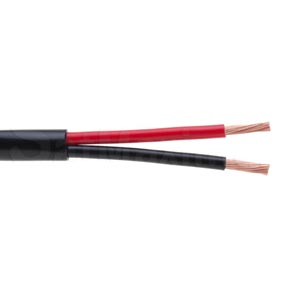 |
 |
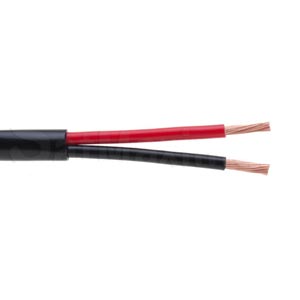 |
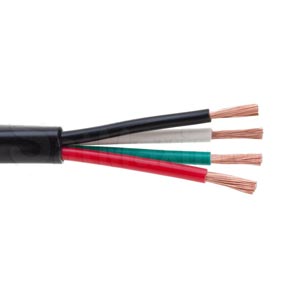 |
However, thicker wire is also more expensive and could be unnecessary. To determine what wire thickness is appropriate for you, you’ll need to consider the impedance of your speakers and the length of your cable. Speakers with lower ohms call for thicker wire. 4-ohm and 6-ohm speakers generally require 12AWG or 14AWG cabling. 8-ohm and 16-ohm speakers are usually fine with 16AWG or 18AWG cabling. Purchasing cable that is on the thicker side is always a safe bet. You’ll never lose audio quality if you purchase a cable that is too thick, but you will lose audio quality if your cabling is too thin.
When it comes to the length of the cable, generally any runs over 100 feet will require at least 12AWG cabling. This is a long distance for electricity to travel and may even require thicker cabling depending on the impedance of the speakers. Distances under 80 feet do not have a huge impact on the electricity traveling through the cable, so the gauge that is recommended for your speakers will typically work just fine. Anything between 80 feet and 100 feet will typically require at least 14AWG cabling. As we mentioned earlier if you are unsure purchasing thicker cable is always safe.
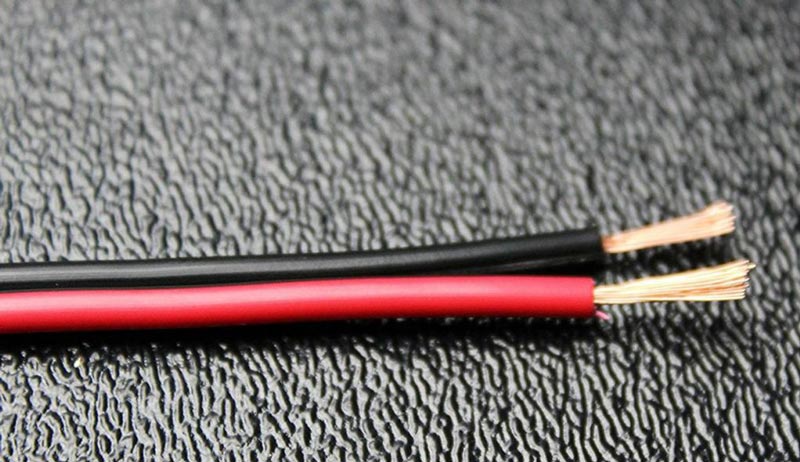
How to choose outdoor speaker wire
Gauge. For outdoor speaker wiring, we would generally recommend wiring between 12 to 14 gauge (or American Wire Gauge, “AWG”). The AWG number determines the thickness of the wire and the lower the gauge number, the thicker the wire. This is why we always recommend going with 12 or 14 gauge wiring because anything less than this thickness may cause your audio quality to suffer. You should also consider the distance between your audio amplifier and the outdoor speakers as the longer the distance, the more degradation in sound quality can occur and you would need a thicker outdoor speaker wire to compensate for the higher impedance.
Distance. Our general recommendation is that 14 gauge wiring is good for anything below 100 feet long – this is especially true if you are looking for burial speaker wiring setups where the wire goes underground directly to your speakers. While 16 gauge speaker wiring is fine for speaker setups less than 80 feet from the power source, we would still recommend 14 gauge as it has a higher voltage capacity and less resistance – which means that your outdoor speakers will perform better. For distances above 100 feet, we would recommend going with 12 AWG. This is because 12 AWG wiring is much thicker than 14 AWG and has less resistance when running through longer distances, thereby improving the sound transmission and quality. For very short distances (i.e., distances below 50 feet), 16 AWG wiring would generally be less costly and able to handle the voltage without any issues.
CL2 vs CL3. The CL rating determines the voltage and fire resistance of the speaker cable. CL2 wiring indicates that the cable is suitable for in-wall installation for home audio setups and can withstand electrical surges of up to 150 volts. CL3 cables indicates that the cable jacket is able to withstand voltage spikes of up to 300 volts. For outdoor speaker wiring, we would recommend anything from CL2 and above to ensure that the wiring can withstand elements and safely conduct electricity without posing a fire risk to your home. This is particularly important for burial-type outdoor speaker wiring and cabling that goes from your home into outdoor exposed environments.
Wire Length. It is generally a good idea to get outdoor speaker wire that is at least 20-30% longer than the intended distance. This is to allow margin for error especially if you are running the wiring through the wall or through underground piping – you would want to cut some slack to the wiring to enable you to move the speakers or re-position your setup if necessary. Additionally, too much strain on the wire may cause sound degradation, so it’s generally a good idea to get longer wires when connecting to your outdoor speaker system.
Direct Burial Wire. If you intend to run outdoor speaker wires through the ground, be sure to check that these wires are protected for underground burial as these wires normally will be exposed to water or sunlight, which means that they require extra protection. If you only intend to use outdoor speaker wiring for patio speakers without direct exposure to the elements, then standard CL2 cabling would usually suffice.
Speaker Cable Why Choose HuaDong Cable
